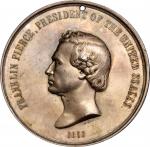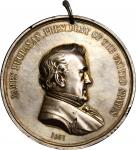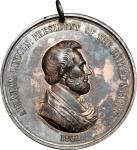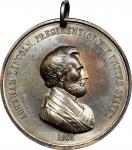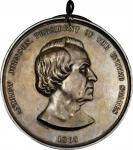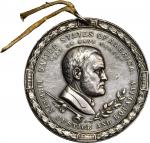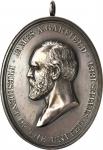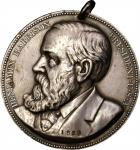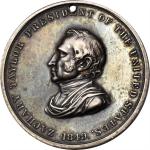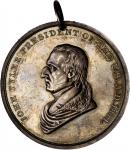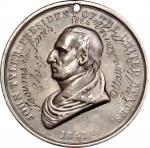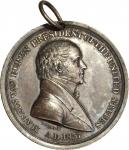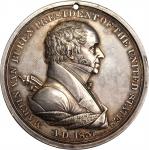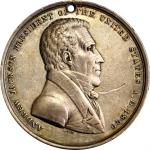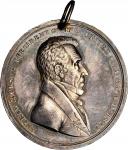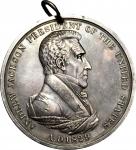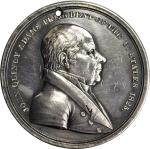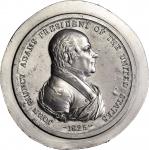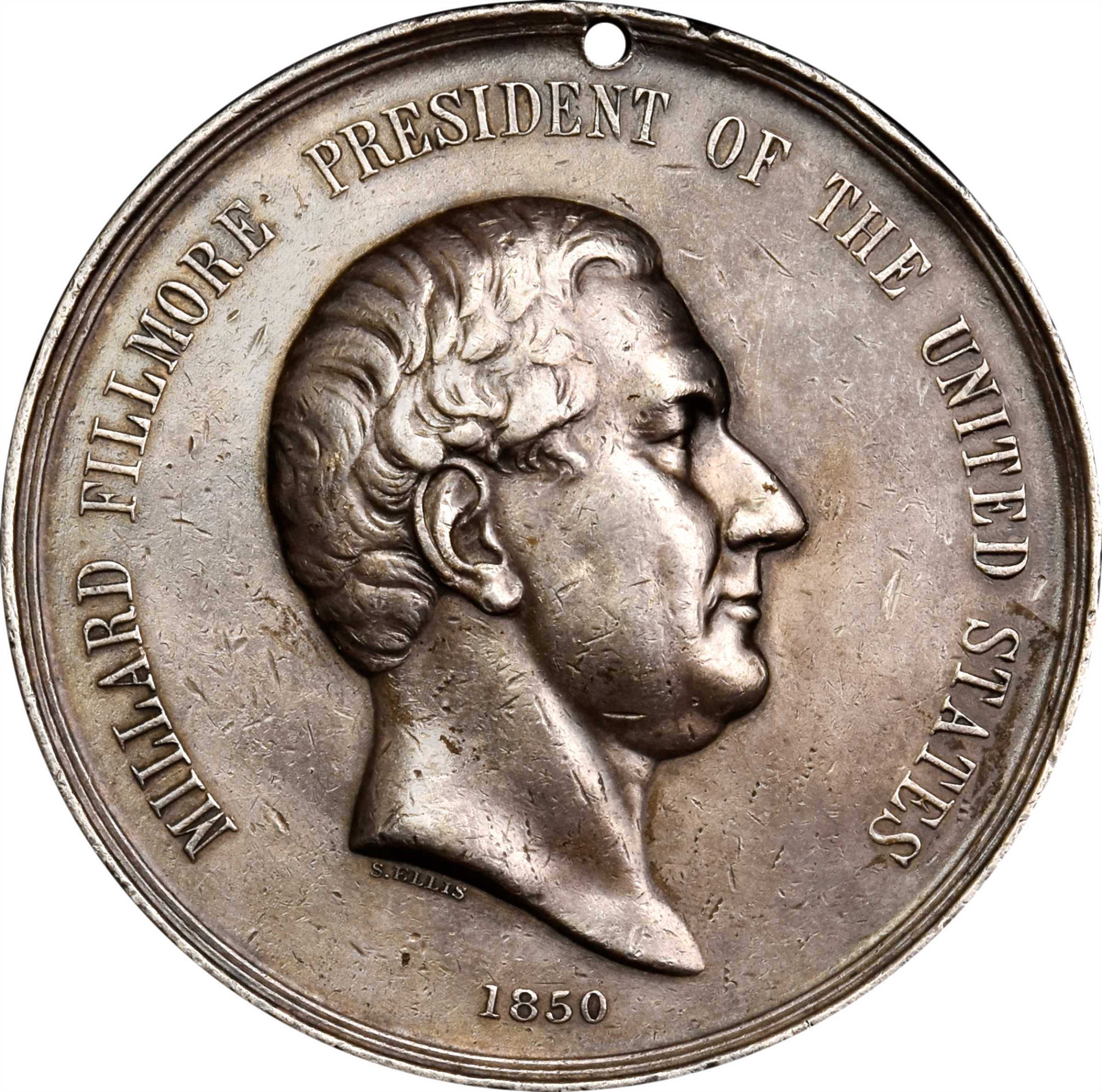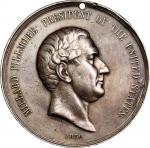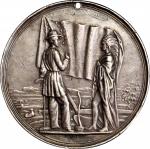1850 Millard Fillmore Indian Peace Medal. Silver. First Size. Julian IP-30, Prucha-48. Very Fine. 75.7 mm. 2155.2 grains. Pierced for suspension at 12:00 as typical. Fairly uniform medium silver gray with just slightly darker patina in some of the recesses. Many small nicks and marks consistent with an issued medal, as this clearly is. A very handsome and wholesome example with but a few light surface deposits noted on the obverse.<p><strong> </strong><p>The Fillmore medals mark a notable departure from the long tradition of the United States Peace medals in the new reverse design adopted for this issue. While the "Peace and Friendship" theme and the clasped hands motif suggested a degree of equality and mutual respect (at least in the art itself), the design adopted here was more clear as to the true perspectives and intents of the awarding entity. Here, a Euro-American at left addresses a Native American at right, each in their own traditional attire. The man on the left points upward toward three connected rings, each encircling one of the words, LABOR, VIRTUE, HONOR. While it is easy for the presenter to suggest this is intended as helpful or encouraging in some manner, it likewise blatantly clarifies that the presenter deemed the "savage" way of life to be devoid of these qualities, quite incorrectly so. It was during the Fillmore administration that the 1851 Indian Appropriations Act was signed, providing funds for the establishment of Reservations for native peoples. While this was promoted as a way to protect native people from encroaching settlements, it really was a large-scale effort to effectively corral native people into clearly defined, controllable areas. As referenced elsewhere in this sale, the 1862 Treaty with the Ottawa specified that the Ottawas desired white settlement (a questionable assertion) and allowed for white settlers to purchase lands, essentially sanctioning their encroachment into the reservation. That treaty went so far as to specify that five years after ratification, the Ottawa would become citizens of the United States, and their tribal identity would no longer be recognized. Those who remained loyal to tribal identity sold out and in 1867 were relocated a second time to Oklahoma.<p> <p>The Fillmore medals were issued in two sizes, and the bullion used for their production was from the substantial number of unused Zachary Taylor medals that were returned to the Mint after Taylors death. According to Prucha, it was expressed that the 162 remaining second-size Taylor medals were to be used for second-size Fillmore medals, and the remaining bullion was to be used for large-size Fillmore medals. Mint records indicate a total mintage of 281 medals for Fillmore, and if the 162 medium-size plan was adhered to, that would leave 119 large size medals. Our estimations of the bullion left from the Taylor medals (minus five "small medals" remaining at the end of the Fillmore administration) and that required for the above mintages is very close, within 2%. According to Prucha, there were 25 large-size medals left at the end of the Fillmore administration. If these were indeed Fillmore medals, that would make the net mintage of this size 94 pieces. A similar situation exists for the medium-sized medals, with 40 remaining unused, resulting in a net of 122 issued mediums. There were also five "small medals" which are assumed to be Taylors. While this all lines up fairly well, we have found more large Fillmore medals extant than medium ones, which would be a bit unusual if these mintages and net issuance figures are accurate.<p> <p>Carl Carlson found eight auction records for large-size Fillmore medals and specified that this represented five different specimens. He found 12 records for the medium size and specified "7 or fewer." The present writer has identified 25 different large medals, with one having a rather suspicious appearance. No aspect of the appearance of this medal raises any questions, however, as it is essentially <em>ideal. </em><p> <em>From the E Pluribus Unum Collection. Earlier from </em><em>Parke-Bernet</em><em>Galleries, November 1966, lot 12; John J. Ford, Jr.; our (Stacks) sale of the John J. Ford, Jr. Collection, Part XVIII, May 2007, lot 131.</em><em></em>


